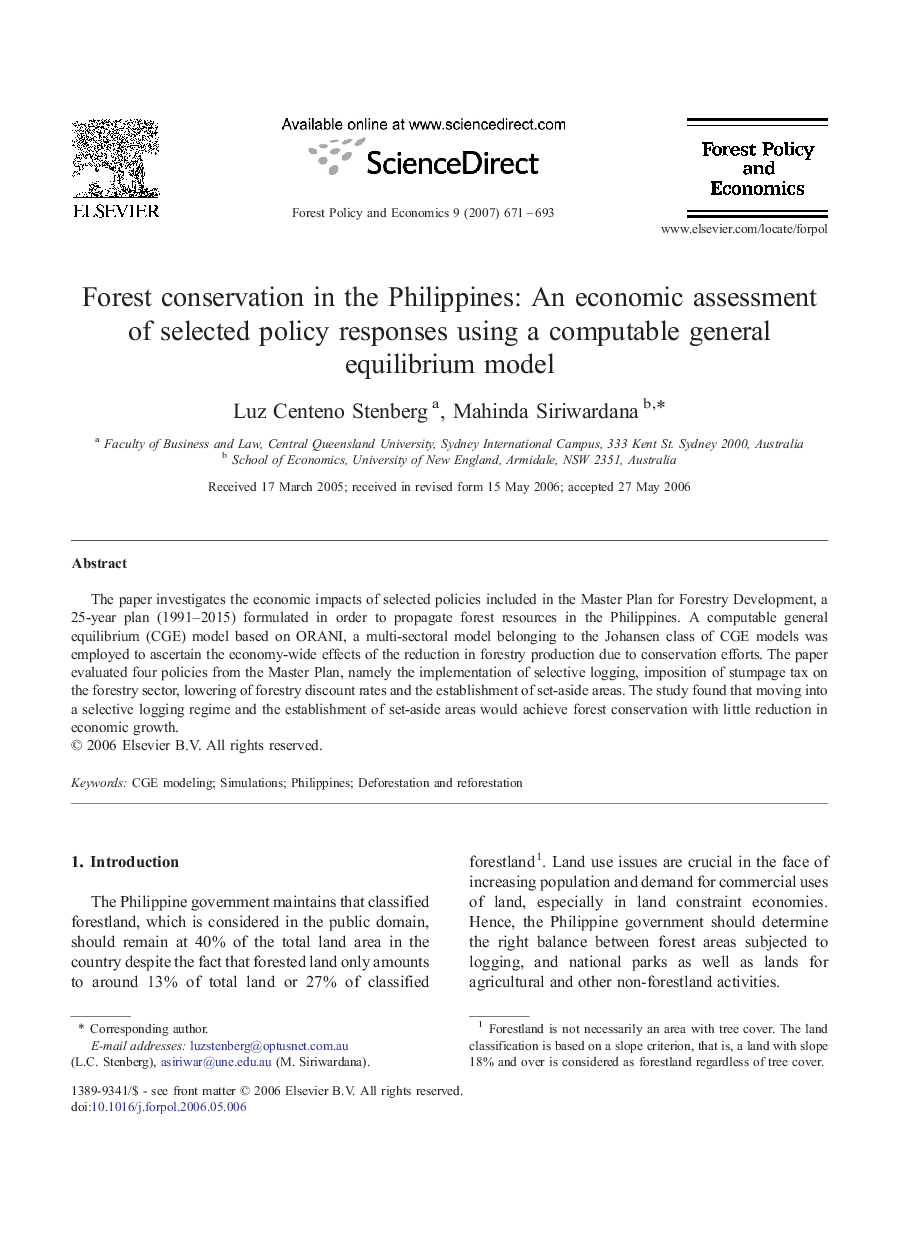| Article ID | Journal | Published Year | Pages | File Type |
|---|---|---|---|---|
| 91362 | Forest Policy and Economics | 2007 | 23 Pages |
The paper investigates the economic impacts of selected policies included in the Master Plan for Forestry Development, a 25-year plan (1991–2015) formulated in order to propagate forest resources in the Philippines. A computable general equilibrium (CGE) model based on ORANI, a multi-sectoral model belonging to the Johansen class of CGE models was employed to ascertain the economy-wide effects of the reduction in forestry production due to conservation efforts. The paper evaluated four policies from the Master Plan, namely the implementation of selective logging, imposition of stumpage tax on the forestry sector, lowering of forestry discount rates and the establishment of set-aside areas. The study found that moving into a selective logging regime and the establishment of set-aside areas would achieve forest conservation with little reduction in economic growth.
